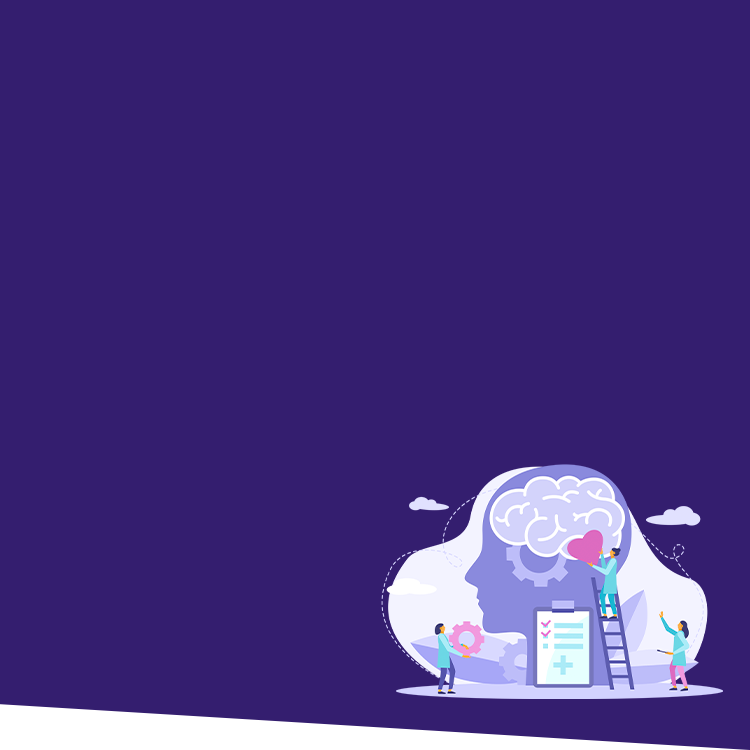Schools can feel like breeding grounds for anxiety. Exhausting schedules, demanding courses, and a litany of other stressors create a high-pressure environment that can overwhelm students.
Anxiety is biological. The brain is not fully developed until nearly 25 years of age, and adolescence, in particular, is a time when major changes take place. Teenage brains are still learning to manage emotion, making middle and upper school students especially vulnerable to anxious feelings.
Educators must understand what’s causing these emotional reactions and learn how to coach their students to be happier and healthier.
The Developing Brain
Three main parts of the brain are involved and affected when you experience intense emotions.
- Prefrontal Cortex: This part of the brain helps you make smart decisions and think before you act. When this part of the brain is in control, you feel calm, safe, and relaxed—helping you make smart choices.
- Hippocampus: This part of the brain helps you remember things. It saves both new and old memories and helps you learn—allowing you to make decisions based on past experiences.
- Amygdala: This part of the brain helps you feel emotions. Its purpose is to keep you safe and guard against things that could hurt you. When in danger, your amygdala sends messages to your nervous system and releases adrenaline that causes your fight-flight-freeze responses to take over.
Your brain is perfectly designed to keep you safe and away from danger. These reactions are biologically necessary because you need to be able to sense when danger is near and get to safety as quickly as possible. Sometimes there is no real danger, but your brain doesn’t know that because it senses stress and distress and reacts accordingly.
For example, the amygdala perceives you’re in danger and sounds a false alarm. The false alarm sends your prefrontal cortex into a tizzy to help you stay safe. This subsequently ignites the fight-flight-freeze response. As you can imagine, this doesn’t always lead to rational or helpful choices, especially for students.
Stress and anxiety are not only real, but natural.
Stress is a part of life. Anxiety is a mental and physical reaction to perceived threats. In small doses, stress and anxiety are useful. They help you stay alert, protect you from danger, and focus your attention on problems. But when they become too severe or occur too frequently, they can become debilitating.
Fight-flight-freeze is how your brain reacts when you have anxiety.
When you perceive a threat—whether emotionally or physically—your body automatically initiates a survival response. Adrenaline and cortisol (stress hormones) begin pumping through the body to activate the fight-flight-freeze response to keep you safe.
During fight-flight-freeze, your heart rate becomes elevated, palms sweat, breathing becomes rapid, and thoughts race. Again, these changes are your body’s way for preparing you to either confront the danger or flee from the threat.
For students, fight-flight-freeze might manifest as avoidance, fidgeting, isolation, defiance, unresponsiveness, anger, or other responses. These symptoms can be exacerbated by a lack of sleep, a lack of social connections, and social media use.

Tune in to live webinars every week during the school year to get specific, research-backed insight you can immediately apply at your school.
Here’s what fight-flight-freeze could look like for students.
Fight
Reaction: Confront the threat aggressively or defensively. Example: A student is unable to find their backpack when they are leaving for school and responds by yelling at a family member.
- Shaking
- Intense reactions
- Feelings of anger or rage
- Emotional outbursts
- Aggression
Flight
Reaction: Run or flee from the danger. Example: A student is called to the Head’s office, and instead, they panicked and hid because they were worried.
- Feeling trapped
- Restlessness or fidgety
- Sense of wanting to escape
- Tension
- Hypervigilance
Freeze
Reaction: Unable to move or act against the threat. Example: A student is taking a test and the first question is very difficult—knowing their parents are expecting them to get a good grade, they forget the material altogether.
- Numbness
- Lack of energy
- Inability to think or respond
- Reduced physical movement
- Feeling ashamed
Fight-flight-freeze reactions are perfectly normal and were designed to keep you safe from danger. However, when you experience such strong emotions, you are not always in danger. Many times, this innate reaction can get you in trouble or intensify your feelings—again, it’s a false alarm!
Teachers can assist students by coaching them through irrational anxiety.
In the past, educators might have considered anxiety symptoms as things to be fixed with more rigid classroom management. However, educators should instead coach students to help them identify and work through their anxiety.
After all, schools are filled with perceived threats. Students worry that their peers won’t accept them; they worry that their teachers don’t like them. Those feelings are natural, but they become irrational when students overestimate the risk and underestimate their ability to manage it.
When students express their anxiety or exhibit its symptoms, teachers must validate their feelings and ask empowering questions. Instructions like “calm down” and “it’s not a big deal” are dismissive and unhelpful.
Instead, consider integrating emotion coaches—coaches who use moments of heightened emotion and resulting behavior to guide and teach the young person about more effective responses.
Emotion coaches can be teachers, advisors, or counselors. The goal of the emotion coach is to approach students with empathy rather than judgment, creating a safe space for students by asking what they need and what they believe is causing the anxiety. Emotion coaches prioritize building students’ emotional intelligence, making them more self-aware. Above all, they help students understand their feelings are legitimate, but also temporary.
Children thrive in an environment of compassion and guidance. By acknowledging students’ feelings and empowering them to work through them, teachers will help them grow into thoughtful, independent, and resilient adults.
*Content courtesy of D&G Wellness.





